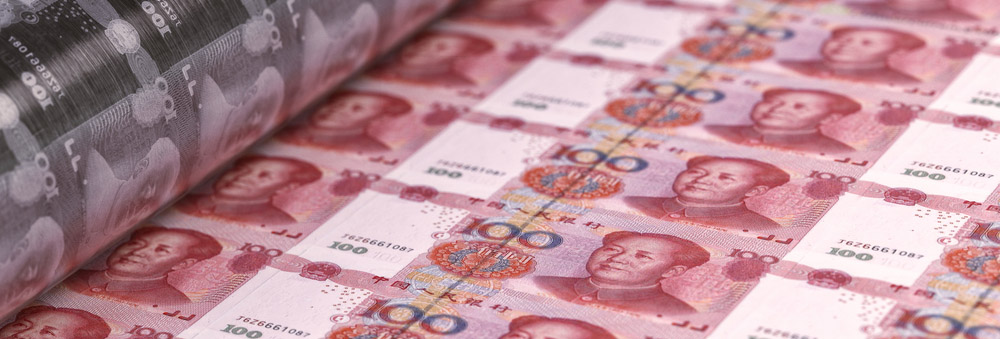Emerging economic power
For several decades the world has witnessed the constant evolution of the People's Republic of China, which has evidenced a total rethinking of its relationship with the outside world and has consolidated great economic, demographic and military growth. In fact, this nation has become the financier of the world. All this has been achieved through China's "Belt and Road", also known as the New Silk Road.
This megaproject was presented by President Xi Jinping in 2013, during an official visit to Nazarbayev University in Kazakhstan, where he announced his decision to build an economic belt around the Silk Road. Similarly, in October of the same year, the Chinese president confirmed the maritime incorporation of this megaproject, called The Maritime Silk Road of the 21st Century, during his participation in the Summit of Economic Leaders of the Asia-Pacific Economic Cooperation Forum (APEC).
Under this initiative, China has launched an ambitious program of loans or grants of development and investment programs aimed at the construction of power plants, gas pipelines, ports, airports and railways in about 138 countries in Africa, Southeast and Central Asia, Europe and Latin America
Similarly, in 2017 two more initiatives were added to the program: the Health Silk Road and the Digital Silk Road. The announcement was made in the framework of increased Eurasian health and digital connectivity. For this reason, China has concentrated on building telecommunications and hospital infrastructure, which has also provided equipment and medical training for health professionals.
In addition, China is the country with one of the best economic performances in the last 25 years with an annual average of 9.5%. According to data from the Chinese Ministry of Commerce, foreign direct investment (FDI) in its mainland grew by 17.8% year-on-year during the first nine months of this year, reaching 142,010 million dollars. The sectors that contributed the most to this figure were services and high-tech industries. Foreign investments came mainly from both the member countries of the "Belt and Road" and the Association of Southeast Asian Nations (ASEAN).
In this way, it is clear why this nation has become an important contributor to the world economy, which it has been consolidating since 1970 when it implemented its policy of reform and opening. Thanks to constant growth, it has benefited from liberalization plans, the rapid development of the high-tech sector and the creation of free trade zones.
Unique geographic location
According to the Diplomatic Information Office of the Spanish Ministry of Foreign Affairs, China has a privileged geographical position compared to the rest of the Asian countries. It is located in the east of the Asian continent and west of the Pacific Ocean. It has a land area of 9,600,000 square kilometers, which makes it the third largest country in the world in area, after Russia and Canada.
This nation, in addition to being one of the most populous in East Asia, has 14,000 km of coastline and shares land borders with 14 countries. In its territory there are wide and beautiful landscapes such as prairies, deserts, mountains, lakes and rivers. While in its capital Beijing there is a rich mix between historical sites such as the Forbidden City palace complex and Tiananmen Square, with today's modern architecture, in the city of Shanghai is the country's global financial center.
Likewise, the iconic Great Wall of China that runs through the north of the country from East to West is another historical monument that has conquered the world for the aesthetic beauty and functionality of the structure, built during the Zhou dynasty to defend against the Mongol invaders. From this nation great inventions such as the compass, the printing press, the first seismograph and gunpowder, among others, were created and released into the world.
Strategic maritime transport infrastructure network
China is now one of the most important nations in the world in commercial terms, since thanks to its territorial dimension it has an extensive port infrastructure that extends along its coastline, where it has about 350 ports and sub-ports or auxiliary ports, through which it mobilizes 57% of international commercial activity in activities such as coal, imported minerals and cereals.
Currently, with its megaproject of the Maritime Silk Road, China dominates about 100 ports in more than 60 countries. For example, at the moment it controls 67% of the Greek port of Piraeus, cataloged as the gateway for Asian products to Europe. This evidences the great expansion of Chinese companies in the global network of ports.
According to the Trade Logistics Unit of the United Nations Conference on Trade and Development (UNCTAD), these types of actions are part of the extensive investment program of Chinese capital in infrastructure works throughout the world. world, with the aim of controlling port concessions at geostrategic points to manage the movement of containers from China to the rest of the planet. With this access to foreign ports, they make it easier for China to develop and manage trade networks to increase its profits.
World investor
Through the implementation of " Belt and Road" (BRI) or also known as the New Silk Road, China has managed to consolidate an important trade network with Asia, Africa and Europe, where about 70 countries have been included in this initiative than changing the current world order.
In this relationship, the Asian country has invested capital in the realization of imposing megaprojects such as bridges, ports, railway lines and highways throughout the world, which has made it easier for it to expand its influence and connectivity. Thus, so far this year, Chinese direct investment showed a year-on-year increase of 13.8%, reaching 7,430 million dollars.
From the perspective of the commercial exchange between China and the member countries of its route, it has reached 9.2 billion dollars, since its launch to date. After the fifth International Exhibition of the Silk Road, held in China, several cooperation agreements were signed that will involve an investment of approximately 24,500 million dollars. In total there are 72 projects signed in which are education, modernization of agriculture and technology.
Along with this, China has signed Free Trade Agreements in Latin America with Peru, Chile, Costa Rica, New Zealand, Singapore and Pakistan. Additionally, it is part of organizations such as:
- The Asia-Pacific Economic Cooperation Forum (APEC)
- World Trade Organization (WTO)
- Asia-Pacific Trade Agreement (APTA)
- Shanghai Organization (SCO)
- Closer Economic Partnership Agreement (China, Hong Kong)
- China Free Trade Agreements (FTAs)
- ASEAN Free Trade Area
Finally, the Asian country has announced the ratification of the RCEP Free Trade Agreement, which is made up of the ten members of Asean (Burma, Thailand, Brunei, Vietnam, Cambodia, Singapore, the Philippines, Indonesia, Laos, and Malaysia), as well as Japan, South Korea, Australia and New Zealand. This agreement will represent about a third of the world economy, and will reach some 26.2 billion dollars.
Growing market
China's domestic market is the largest in the world and continues to grow despite the financial crisis. An interesting aspect is that it has more than 1,300 million potential clients, which represent approximately 19.5% of the world's population, and of which 400 million have a per capita income equal to the European average.
According to the program with which China is conquering the world, we can establish three main points that support the new growth model, such as: achieving common prosperity, achieving self-sufficient technology within the framework of the dual circulation strategy (promoting growth combining domestic demand and foreign exports and investments), and finally achieve the implementation of carbon neutrality.
Additionally, China has begun to include America on its operations radar, where it is already the second largest investor in Latin America, and as such, has more than 13 double taxation and investment protection agreements in force with the countries of the region.
Highly Skilled Labor
It is well known that China, in addition to being the world's factory, is also the study and business center for large international companies. In addition, it represents a low-cost production base with enormous potential for workers with the attitude to learn and reinvent themselves.
According to the Chinese National Bureau of Statistics, China has about 880 million people between the ages of 16 and 59 of working age, evidencing the abundance and quality of the country's workforce.
According to the 2021 McKinsey global consulting report, due to the transformation generated by the automation of work and the digitalization of the Chinese economy, about 220 million workers in this Asian giant, that is, 30% of its workforce They will have to requalify and even change their occupation by 2030. This is how the demand for new jobs is emerging, such as technicians in innovation and development, personnel in the service sector, manufacturing workers, professionals in construction and in the agricultural sector.
Although it is true that the value of cheap labor in China is an attractive point for investors or businessmen in the world, because it makes Chinese manufacturing quite competitive, the great comprehensive infrastructure capacity of this Asian nation, a key piece, should be highlighted. for the production and development of any type of large-scale product.
.jpg)



